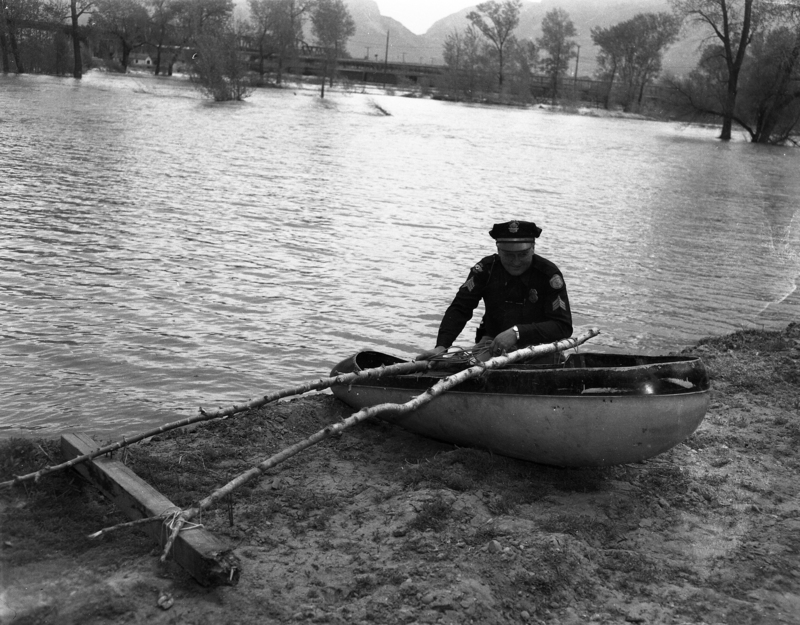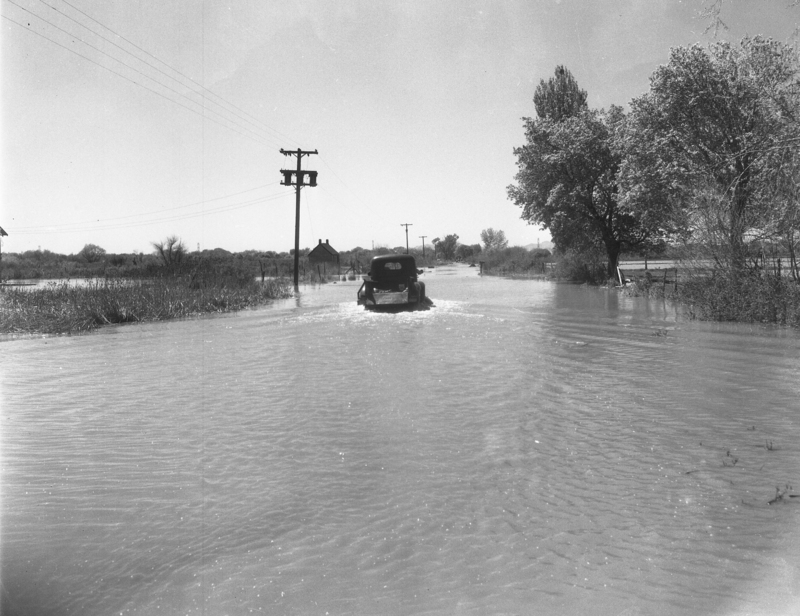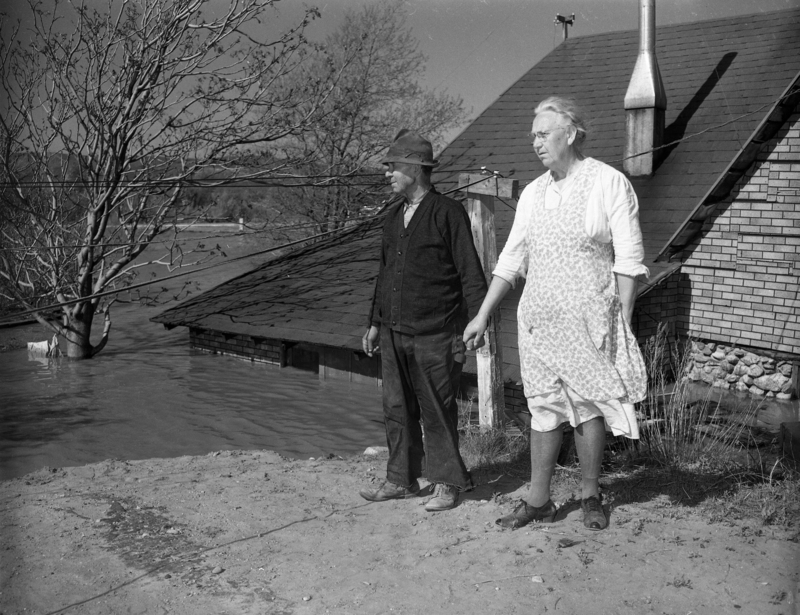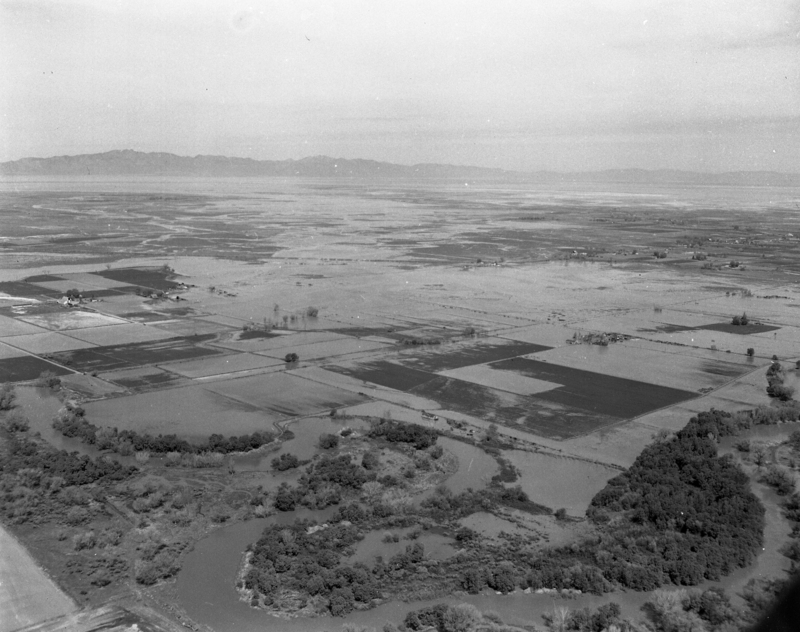Floods of 1952
In April 1952 severe flooding began in the Great Basin and the Green River Basin, caused by heavy snowfall the previous winter and an abrupt change to above-normal temperatures in March and early April. This flooding would continue into June, breaking previous river flow records and causing millions of dollars of damage.
Weber County officials began to worry about flooding in February when they realized snow levels were 150-200% above normal. The three major reservoirs—Echo, East Canyon, and Pineview—were almost completely emptied before the beginning of runoff to prepare for flooding. The Weber County Commissioners also proposed a $500,000 flood control project on the lower Weber River, but the project was not completed in time to be effective.
By April 25, the Ogden and Weber rivers had already reached flood stage, although peak runoff was still to come. During the first half of May, the rivers overflowed and caused damaged along their channels; Morgan and Warren received the brunt of the damage. Officials warned citizens against sightseeing in Ogden Canyon as they couldn’t guarantee the roads would be passable. On the morning of May 5, the Weber River reportedly looked like Niagara Falls leading to road damage and burying homes under water.
Flooding continued throughout Utah and in parts of Nevada, Wyoming, and Idaho. By the end of May, temperatures dropped enough to refreeze the high-elevation snow cover, allowing the rivers and streams to recede. All told, the floods caused over $10 million in damages and two lives were lost, including Carl Harris. The 17-year old drowned on the Weber River when his boat capsized.



